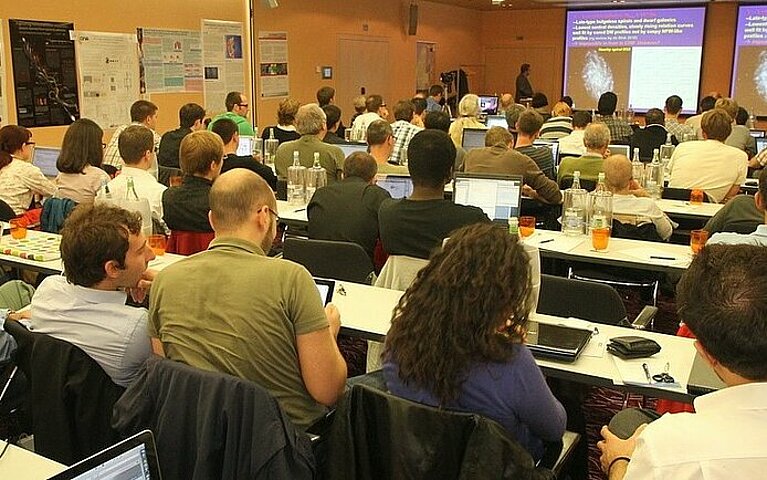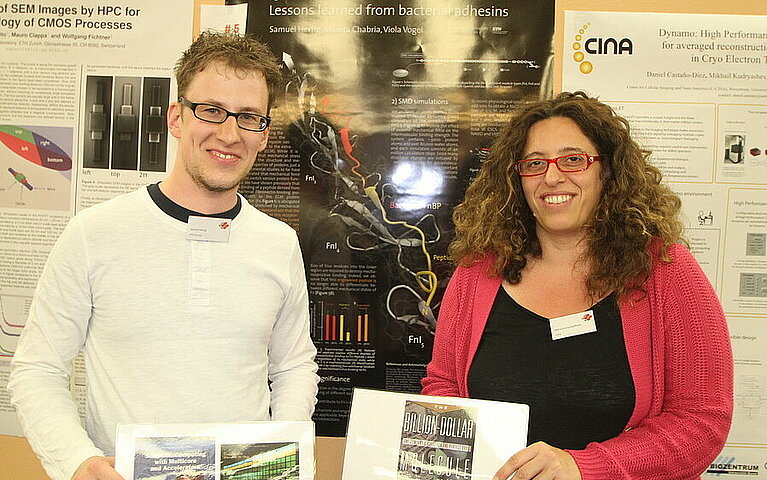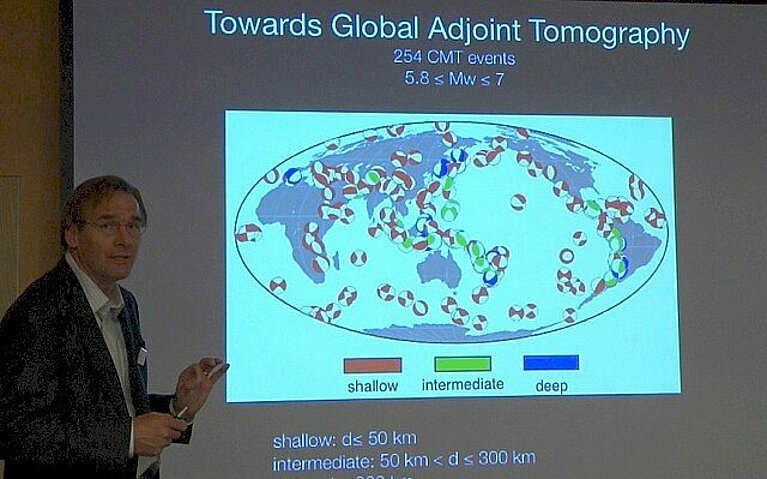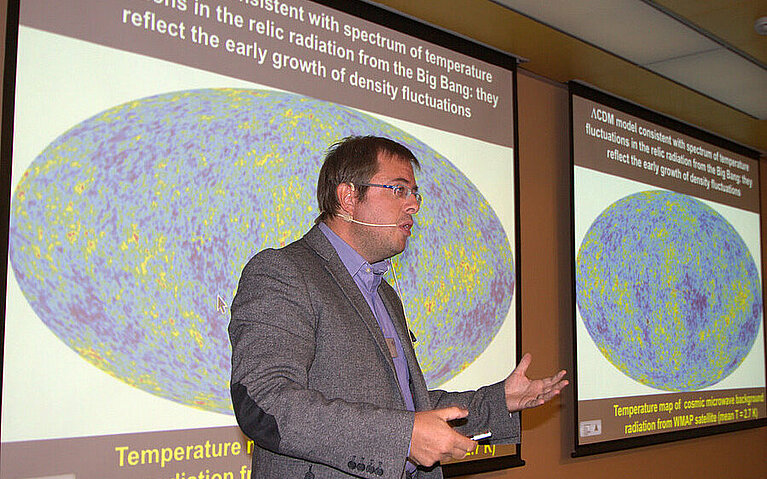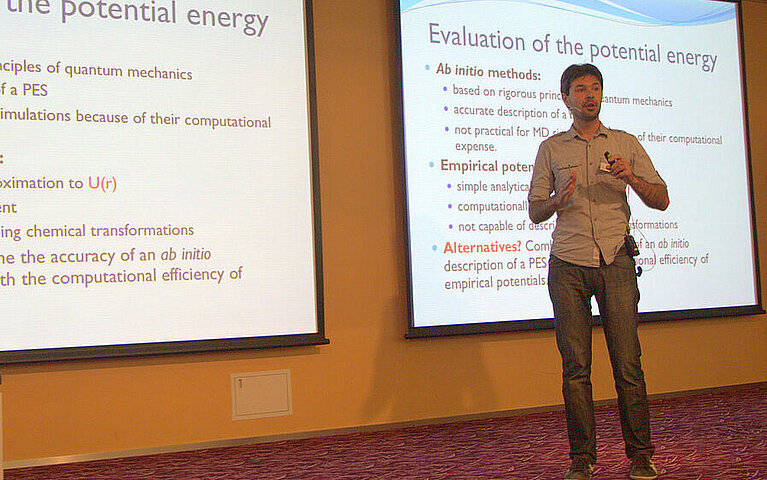September 30, 2011 - By Simone Ulmer, CSCS
The Jet d’eau, the famous fountain in Lake Geneva, is driven by two pumps that send 500 litres of lake water per second 140 metres up into the air at a speed of 200 km/hour. The pumps have an impressive total power output of 1000 kilowatts. This puts the energy consumption of the CSCS’s ‘Monte Rosa’ supercomputer in the shade. ‘Monte Rosa’, which performs up to 200 billion computing operations per second, has an energy consumption of ’only’ 700 kilowatts. CSCS Director Thomas Schulthess welcomed and astonished User Day participants with this comparison. A ‘gimmick’ that consumes more electricity than a scientific computer centre whose energy consumption is always a hotspot in the energy balance of the institution to which it belongs.
Only limited research is possible without a supercomputer
Whereas the Jet d’eau is just a tourist attraction, many research objectives are no longer attainable nowadays without supercomputers. Major strategic projects in Switzerland, such as the new X-ray free electron laser (SwissFEL) planned at the PSI (Paul Scherrer Institute) or EU flagship projects such as FutureCT are impracticable without supercomputers. Even Blue Brain would remain just wishful thinking.
Interest in this year’s User Day was greater than ever before. Around 60 users of the CSCS supercomputer met scientific colleagues and CSCS staff in Lucerne on Friday 23 September to share information about their latest research. Samuel Hertig, a doctoral student under ETH Zurich professor Viola Vogel, regularly takes part in the User Day: “I am always happy to take part in the CSCS User Day because it gives you a perspective on all current projects in Switzerland that use HPC resources, and also provides news about the new hardware at CSCS.” Hertig had reason to be especially happy on this day, as he received the ‘Best Poster Award’ for his poster. His prize, presented by the CSCS, came in the form of book tokens. In addition to the poster, the competition also included a requirement for the authors to present the essential scientific statements of their poster in a short lecture lasting just two minutes. Among other issues, the research by Viola Vogel’s group at the Institute for Biologically Oriented Materials is concerned with how tensile forces in tissues act on bacteria (see previous article on this topic »).
The insights given by the poster presentations showed that many researchers are involved in the High Performance and High Productivity Project (HP2C). The platform’s aim is to optimise the programmes and algorithms that the researchers use for simulations in such a way that future computer architectures can be used efficiently. For example, climate and materials researchers, chemists, physicists, astrophysicists, biologists and medical researchers are involved with the platform. The unique platform is setting an example in the HPC community in Switzerland, and is one of the reasons why the CSCS User Day is arousing increasing interest. It allows users to exchange information with other researchers and specialist staff from the CSCS, and to develop new project ideas or collaborations.
In addition to the poster presentations and the information from the CSCS about upgrades and programming techniques for GPU computer architectures , scientists presented their latest computer-assisted research in the run-up to the conference. An invited guest was the geophysicist Jeroen Tromp of Princeton University who, together with other scientists, uses an ingenious method to create a realistic simulation and image of the Earth’s crust and its mantle under Europe. For this the researchers used the data from 160 earthquakes, which they simulated in a simple model of the Earth’s interior. They then iteratively reduced the misfit of the data of the recorded seismic waves of the earthquakes by decreasing the differences between the simulated and the available data through computer-assisted adjustments and refinements of the model. After 11,200 simulations they obtained a tomographic image of the crust and the earth’s mantle below Europe. The aim now is to represent the whole terrestrial globe tomographically based on 5000 earthquakes (see the full presentation).
YouTube sensation
University professor Lucio Mayer presented his latest research work, in which he and his team succeeded for the first time in achieving a detailed simulation of the origin of the Milky Way.
The visualisation of the simulation published on YouTube attracted a level of attention previously unsurpassed in the field of astrophysics simulations, registering more than 218,000 clicks.
Rustan Khaliullin from the group led by Michele Parrinello, a professor at the ETH Zurich and the Università della Svizzera italiana, concluded the series of scientific lectures with a presentation of the latest research breakthrough in the simulation of molecular dynamic processes. The team has succeeded in using molecular dynamic simulations to show how diamonds are formed from graphite under high pressure (see the full presentation).
Next year the users will be invited to the new CSCS building at Cornaredo in Lugano, where they will get an insight into where their calculations and simulations will be carried out in future.
